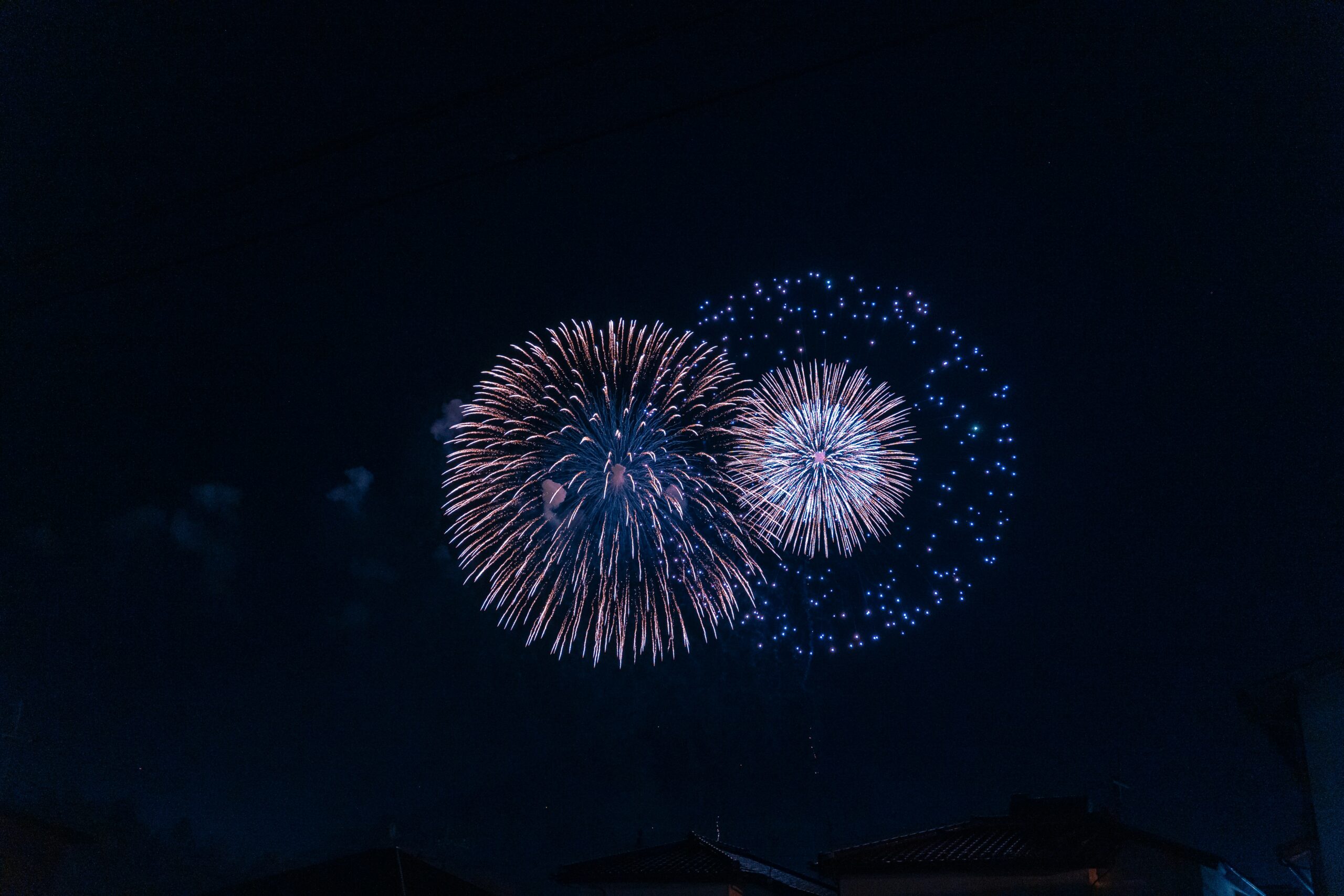Do you know about Japanese fireworks?
Japanese fireworks are so popular around the world that some people say “This is Japan!
What is it about Japanese fireworks culture that makes Japanese people and people around the world fall in love with it once they see it?
In this article, we will focus on the history of Japanese fireworks!
By reading this article, you can easily learn about Japanese fireworks, so please enjoy it to the end.
History of Fireworks in Japan

The beginning of the fireworks
It is said that fireworks in Japan originated in the Edo period (1603-1868).
The origin is said to be the “Suijinsai” (Water God Festival) held on the Sumida River in 1733.
At that time, epidemics and famines were prevalent in the Edo and Kansai regions, resulting in many deaths.
“Suijinsai” was held as a memorial service for the dead and to drive out the plague, and fireworks displays were started.
In other words, Japanese fireworks festivals began in the Edo period (1603-1867) as a way of mourning the dead and to drive out epidemics.
Japanese pyrotechnists Tamaya and Kagiya

At Japanese fireworks displays, some people shout “Tamaya” or “Kagiya” along with the fireworks.
Tourists from abroad may be surprised to see this.
But don’t worry. It does not mean that they are crazy.
The culture of shouting like that is fading away these days, but not so long ago, people used to shout it out loud.
The shouts are the trade names of famous fireworks makers from the Edo period.
They are “Tamaya” and “Kagiya.
Fireworks were set off competitively by pyrotechnicians under these two trade names, and people shouted whichever one they thought was the most beautiful.
If you consider yourself the most beautiful, you may shout your own name!
This competition and the pursuit of beauty in fireworks attracted people and became accepted by the common people during the Edo period and took root as a standard event.
Fireworks as a Japanese summer tradition
In Japan, “fireworks” are commonly recognized as a summer tradition.
It is an indispensable part of enjoying summer in Japan, as people invite their favorite person to a summer festival to watch fireworks together or wear yukata (light cotton kimono) to see fireworks.
But why are fireworks considered a summer tradition?
It is because the Japanese culture of Obon is in the summer.
Obon is a time in mid-August when we welcome the spirits of our ancestors and hold memorial services for them.
Fireworks were first used to mourn the dead, and many fireworks displays are still held around Obon.
Fireworks are also enjoyed in the hot and humid summer weather of Japan as a way to enjoy the cool of the evening while watching the fireworks in the evening breeze.
Famous Fireworks Festivals in Japan
Introducing the most famous fireworks displays in Japan.
In a recent article, we introduced the three most famous fireworks displays in Japan. Please check out the following article for those three!
I will include three famous fireworks displays that are not included in the above article.
Lake Suwa Fireworks Display
The Suwa Lake Festival Lake Fireworks Display is held every year on August 15 at Suwa Lake in Suwa City, Nagano Prefecture.
It is a very popular fireworks display that attracts about 500,000 people every year, and with a total of 40,000 shots, it is said to be the largest fireworks display in Japan.

| Location of Suwa Lake | Suwa City, Nagano Prefecture / Shimosuwa Town, Shimosuwa County / Okaya |
| Official website | https://suwako-hanabi.com/kojyou/ |
| Scheduled to be held | August 15, 2024 |
Sumida River Fireworks Display
The Sumida River Fireworks Festival is held on the last Saturday of July every year on the banks of the Sumida River in Tokyo.
In 1732 during the Edo period (1603-1867), a great number of people died as a result of a famine and epidemic.
The origin of this fireworks display is the “Ryogoku no Kawabiraki (Opening of the Ryogoku River)” in 1733, which followed the Suijin Festival held by the Edo shogunate to pray for the repose of the souls of those who perished and the eradication of epidemics.

| venue | (1) Sumida River near Asakusa/Oshiage/Tokyo Skytree/Hikibune Stations Venue (2) Sumida River near Asakusa/Kuramae/Ryogoku/Asakusabashi Stations |
| Official website | https://www.sumidagawa-hanabi.com/index.html |
| Scheduled to be held | Saturday, July 27, 2024 (scheduled) |
Naniwa Yodogawa Fireworks Festival
The Naniwa Yodogawa Fireworks Festival is a fireworks display held every year in early August along the Shin-Yodogawa River in Osaka.
It is a handmade fireworks display that has been planned and operated since 1989, financed by volunteer staff who love the local area and donations from local residents, including local businesses, organizations, and stores.

| venue | Yodo River near Juso Station/Tsukamoto Station |
| Official website | https://www.yodohanabi.com/ |
| Scheduled to be held | Saturday, August 3, 2024 |
conclusion
In this issue, we have introduced the history of fireworks displays in Japan.
I have explained the beginnings of the fireworks display, about “Kagiya” and “Tamaya,” and how they are a beloved summer tradition in Japan.
If you visit Japan in the summer, I would like you to visit a fireworks display, and by keeping in mind what I have introduced here about its history and knowledge, you will be able to feel the Japanese culture even more.
Thank you very much for your time.
A free spirit who travels for work-holiday and overseas trips. I, who have a beautiful and wonderful heart, will introduce you to the charms of Japan.




